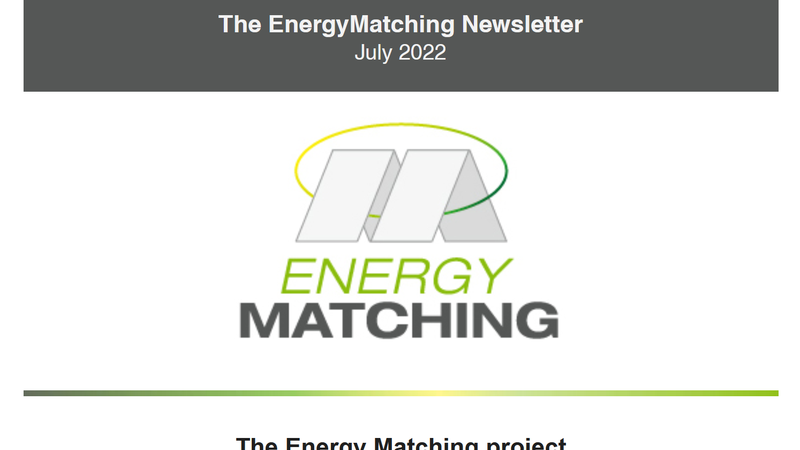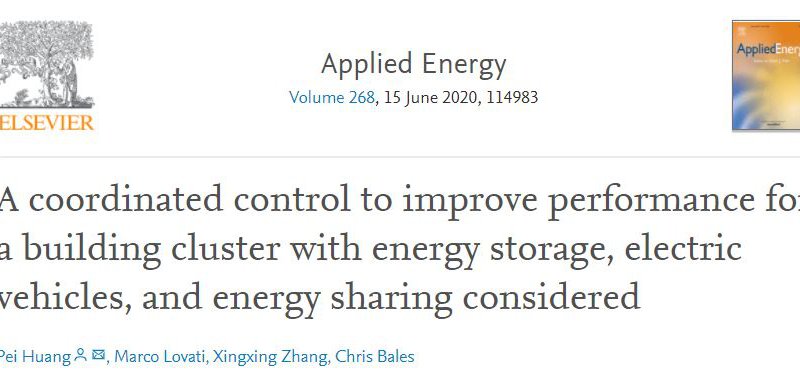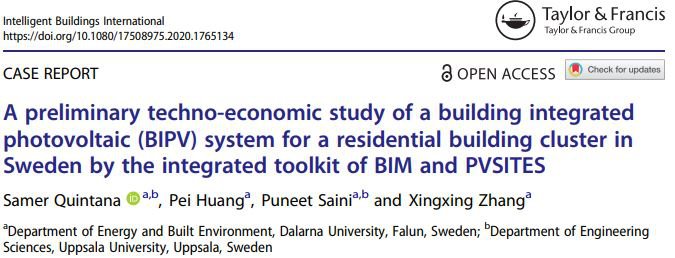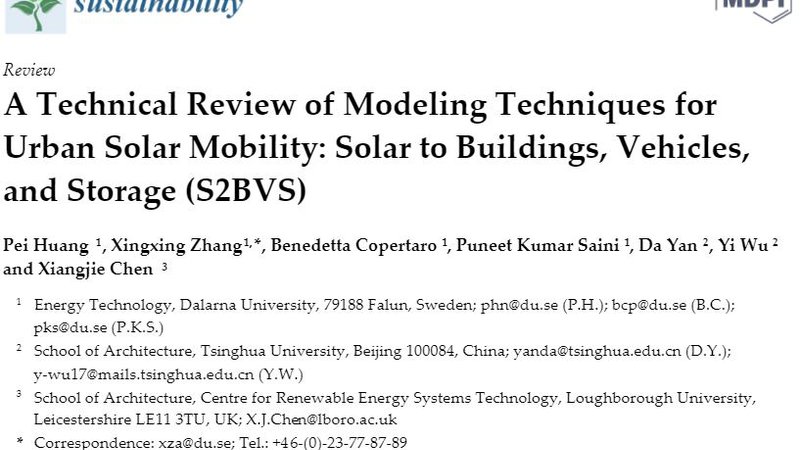
The final EnergyMatching Newsletter
Click here to download the final Newsletter
Read More
Click here to download the final Newsletter
Read More
This study proposes a coordinated control of building cluster with both energy sharing and the EV charging considered, with the purpose of improving the cluster-level performance. The simulation results show that in a typical summer week in Sweden, the developed control can increase the cluster-level daily renewable selfconsumption by 40% and meanwhile reduce the electricity bills by as much as 20% compared with conventional controls for a summer week in Ludvika, Sweden.
Pages from SProceedings no 5-98.pdf (unit.no)
Read More
This paper proposes an integrated simulation framework for both building design and energy performance analysis. Literature review shows that, although many studies exist, most of them did not fully consider the integrated techno-economic evaluation of building-integrated photovoltaic (BIPV) system. Therefore, this research aims to use the interoperability potential offered by applying a building information modelling BIM-friendly software to an integrated simulation tool to conduct a comprehensive techno-economic evaluation of a BIPV system in a building cluster.
Read More

The deployment of solar photovoltaics (PV) and electric vehicles (EVs) is continuously increasing during urban energy transition. With the increasing deployment of energy storage, the development of the energy sharing concept and the associated advanced controls, the conventional solar mobility model (i.e., solar-to-vehicles (S2V), using solar energy in a different location) and context are becoming less compatible and limited for future scenarios. For instance, energy sharing within a building cluster enables buildings to share surplus PV power generation with other buildings of insufficient PV power generation, thereby improving the overall PV power utilization and reducing the grid power dependence. However, such energy sharing techniques are not considered in the conventional solar mobility models, which limits the potential for performance improvements. Therefore, this study conducts a systematic review of solar mobility-related studies as well as the newly developed energy concepts and techniques.
Read More